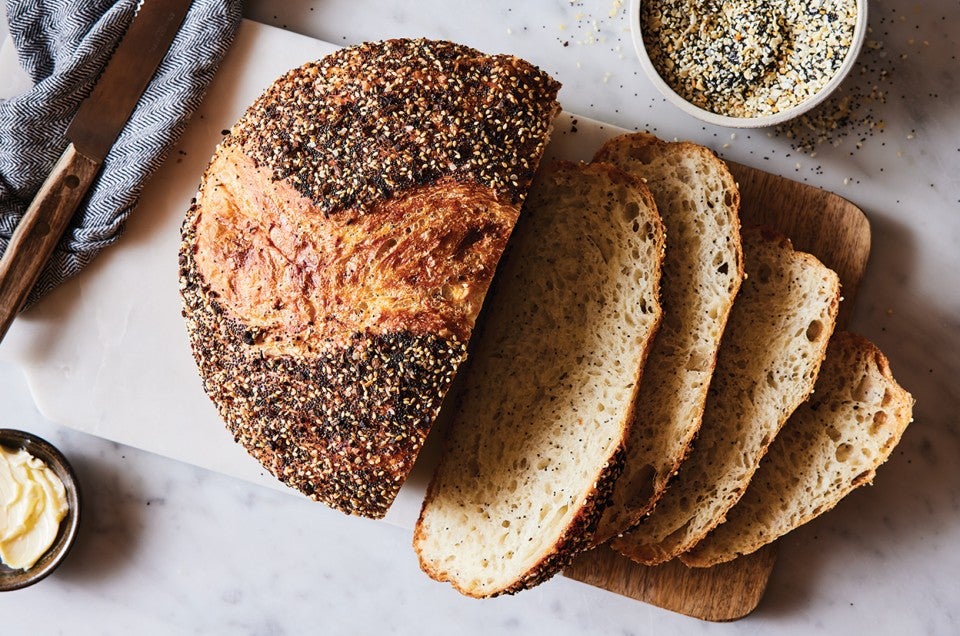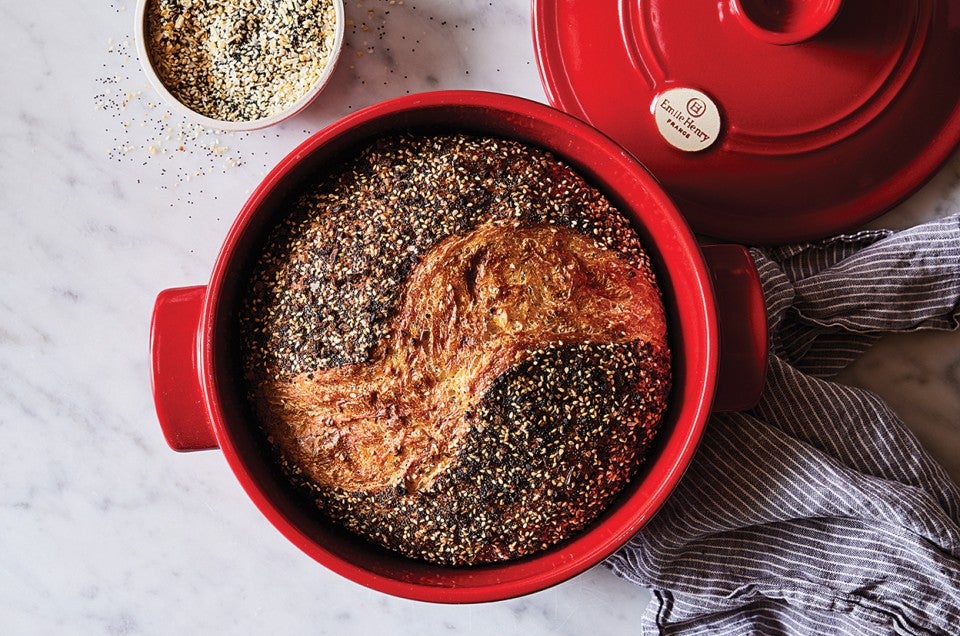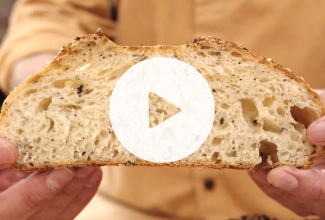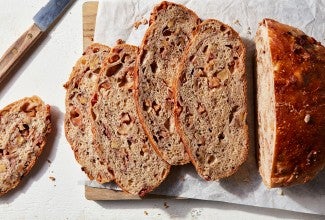No-Knead Everything Bread
Can't decide between a cream cheese-covered bagel and a slice of toast to start off your day? Now you can have both with this slightly chewy, crusty loaf that's studded with Everything Bagel Topping. (The flavorful seed mixture is in the dough, as well as covering the top crust.) Choose high-gluten flour for the chewiest texture or bread flour for something more akin to traditional toast. Either way, a schmear of cream cheese is highly encouraged!






















